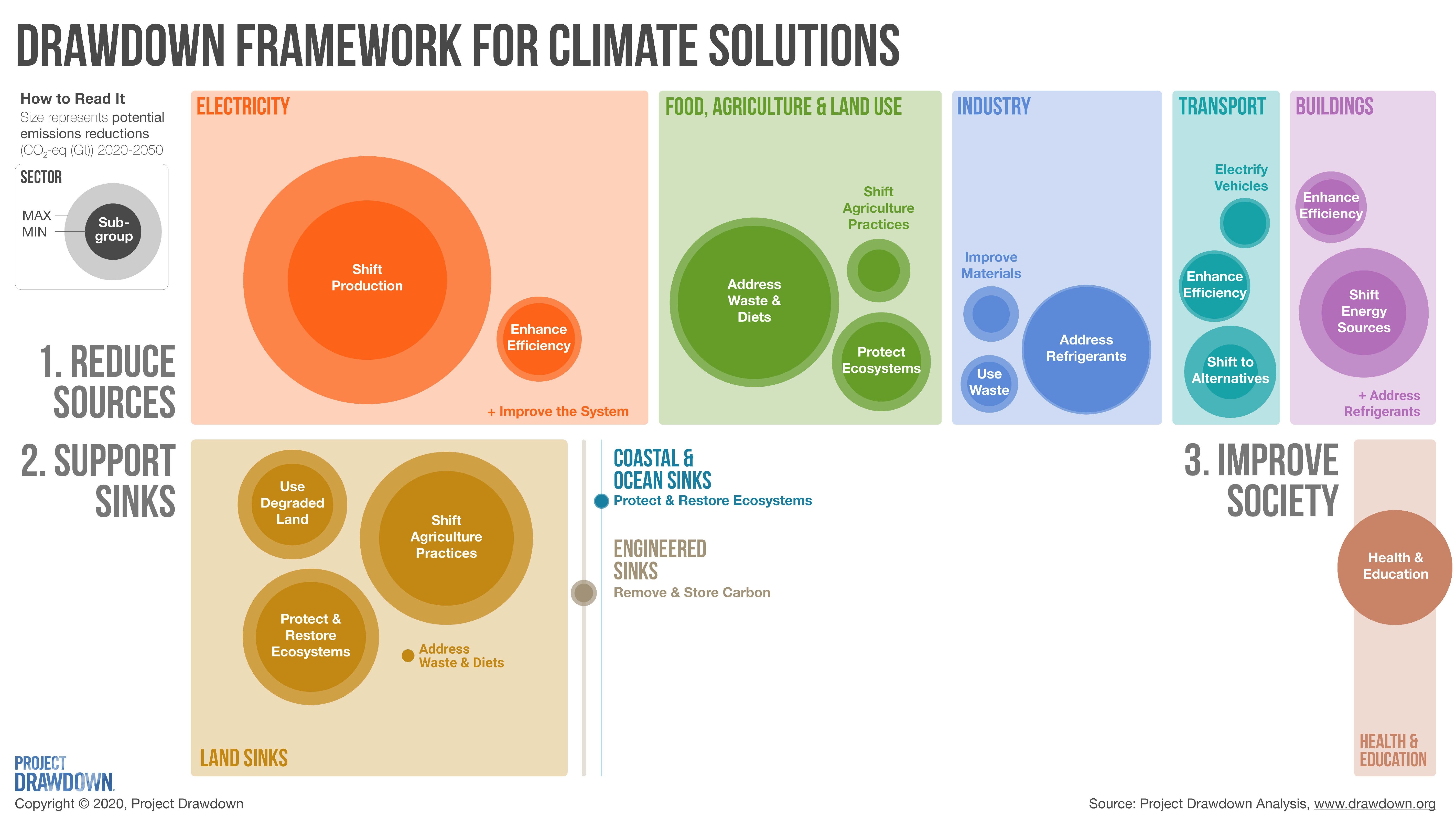by Rick Pruetz, Vice President, Ecocity Builders
Climate action can seem like the title of the movie Everything Everywhere All at Once. Yes, we need to be able to do several big things, in many different places, and right now. But we also need to prioritize investments that are most effective at delivering big emission reductions in this decade while laying the foundations for longer-term solutions needed to hit the net-zero target by 2050. Fortunately, Project Drawdown will soon release a science-based guide to help us find our way through the maze of potential pathways. Not surprisingly, actions incorporated within our Ecocity Standards are essential to this climate action roadmap.
At the Ecocity World Summit 2019 in Vancouver, Canada, Paul Hawken gave a rousing keynote address that unpacked several of the 100 climate action solutions found in the landmark 2017 book, Drawdown. Since then, Project Drawdown has developed an impressive library of climate action solutions supplemented by publications focusing on key climate action sectors, such as Electricity and Farms/Agriculture/Land Use (www.ProjectDrawdown.org.)
In a 2023 TED Talk, Project Drawdown Executive Director Jonathan Foley provides a sneak preview of the Project Drawdown Roadmap, a soon-to-unveiled “cookbook” that recommends which of these solutions should be brought to scale immediately (Foley 2013). Foley urges us to let science, rather than agenda-driven hype, guide humanity to a net-zero planet by 2050.
Many people would like to believe that we can single-handedly solve the climate emergency by sucking the excess carbon out of the atmosphere using soils, forests, oceans, and not-yet-scalable machines. Foley agrees that carbon removal will play a role closer to 2050 in offsetting the GHG emissions that will inevitably still occur. But he cautions carbon removal will achieve only six percent of that goal because carbon-reduction is now capable of offsetting a tiny, almost non-detectable fraction of our emissions. Consequently, investments in carbon removal should not be made at the expense of investments needed to achieve massive emission reductions in the next two or three years.
As the term “climate emergency’ implies, immediate action is essential. The early reduction of emissions illustrates the time value of carbon, or, as Foley calls it “the gift the keeps on giving”. A 50-percent cut in emissions by 2030 will accumulate over the next 20 years, achieving a 900-gigaton reduction by 2050. This “time value of carbon” is like the time value of money: saving for retirement works best when you act early rather than waiting until you are 64 years old. Significantly, a 50-percent emission reduction by 2030 will generate 75 percent of the total emission reductions needed to reach net zero by 2050. Put another way, immediate solutions undertaken now are far more effective than high-tech solutions that may take decades to reach a meaningful scale.
Actions that can be taken immediately include stopping deforestation, which represents about 12 percent of current emissions. Similar near-term solutions involve plugging methane leaks and simply applying the energy efficiency tools we already have at our disposal. We concurrently need to accelerate the decarbonization of electrical generation, transportation, and agriculture today even through these solutions will produce results a little later. And although the payoff may be even further in the future, Foley argues that now is the time to invest in regenerative agriculture, reforestation, ocean farming, and people, particularly women and indigenous populations.
In addition to early action, Foley argues that investments in energy efficiency and decarbonization should ideally be roughly proportional to the importance of six sectors in meeting the 2050 net-zero goal. Electricity and Food/Agriculture/Land Use have the greatest impact on climate action followed by Industry, Transportation, Other, and Buildings. However, venture capital investments in the Transportation sector, particularly electric vehicles, surpass those aimed at all the other sectors combined despite the fact that the Transportation sector represents only 13 percent of the problem.
In addition to acting early and in the most important sectors, Foley argues that we should think geographically with actions that generate the biggest bang for the buck. For example, 30 percent of our power plants produce 70 percent of CO2 emissions and one percent of oil and gas wells generate 30 percent of methane leakage.
Importantly, the solutions found in the Ecocity Standards mirror those advocated by Project Drawdown from walkable communities, energy efficiency, and ecomobility to circular economies, education, and socio-economic development.
But this deeper dive will have to wait for a future issue, or perhaps several future issues, of Ecocities Emerging.
Resources Foley, Jonathan. Project Drawdown Roadmap Ted Talk. https://www.google.com/search?q=foley+ted+talk+on+project+drawdown+roadmap&oq=foley+ted+talk+on+project+drawdown+roadmap&aqs=chrome..69i57j0i546l2.20127j0j15&sourceid=chrome&ie=UTF-8#fpstate=ive&vld=cid:9b1dceb7,vid:7zvdYIrBros


